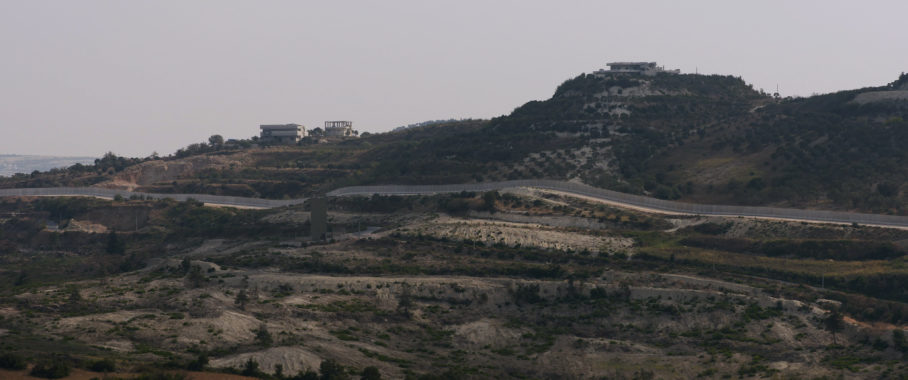
© » KADIST
Eric Baudelaire
In a society saturated by images, Eric Baudelaire is interested in political events that have not found their representation. For the film The Anabasis of May and Fusako Shigenobu, Masao Adachi and 27 Years without Images, Baudelaire conducted research on 1970s Japanese cinema and more specifically on Wakamatsu and Masao Adachi’s filmography. In 1971, as the two legendary filmmakers of Japanese Nouvelle Vague were on their way home from a presentation at the Cannes festival, they stopped in Beirut, where their thinking concerning the image took the form of political activism.

© » KADIST
Eric Baudelaire
Baudelaire’s latest film, Also known as Jihadi (2017) tells the story of a young French boy from Parisian suburbs and his assumed journey to the Al-Nusra front in Syria to join ISIS and fight Bashar al-Assad’s regime. Employing the cinematographic approach known as ‘landscape theory’ — or fûkeiron — developed out of Marxist film criticism in the 1970s where the landscape of a film is read as an expression of the political climate, thus becoming a significant character, motivation or reasoning for the films development. The 101-minute follows Abdel Aziz from the socially and politically rife milieu of the Parisian suburbs, weighted by division, segregation, development and poverty to, what the viewer assumes, Syria.

© » KADIST
Eric Baudelaire
With the war-torn Beirut cityscape as its backdrop—urban alleys, glistening beaches, abandoned buildings—Eric Baudelaire’s complex film, The Ugly One , unfolds in a time and place that vacillates among revolutionary narratives of the past, the fragile and ever-changing political situation of the present, and attempts to piece together the memories of those that live, or once lived, in the city. Conceived as a sequel to his documentary The Anabasis of May and Fusako Shigenobu, Masao Adachi and 27 Years Without Images (2011), Baudelaire builds the structure of the film around a story told by Japanese New Wave film director Adachi, who also narrates the film. The plot line pivots around two lovers and former resistance fighters, Michel (played by Lebanese artist and actor Rabih Mroué) and Lili (Juliette Navis); their narratives fragment and reconfigure around the screenplay, which itself intertwines with Adachi’s own history, the act of making the film, and the self-conscious and sometimes improvisatory process of writing the script.

© » KADIST
Eric Dizambourg
Eric Dizambourg’s film presents a bucolic and ludicrous world used as a background for a character who is an actor as well as a performer. This character comes and goes throughout the countryside, the barn and an urban setting, a world of odds and ends where objects often seem to be used for other purposes than their original ones.

© » KADIST
Eric Dizambourg
Like the film Le Mouton noir, this dimension is counterbalanced by a burlesque element. The piece of fabric on the rat’s paw or ‘graft’ becomes a patchwork made out of colorful geometric shapes recalling a Harlequin costume, thus referring directly to the burlesque tradition. This leitmotiv creates a contrast with the dull colors, the humility of the countryside, and makes the figurative scene look unreal to reveal its superficiality.

© » KADIST
Erick Beltran
Drawing & Print (Drawing & Print)
In his posters, prints, and installations, Erick Beltrán employs the language and tools of graphic design, linguistics, typography, and variations in alphabetical forms across cultures; he is specifically interested in how language and meaning form structures that can be misconstrued as universal. In The Individual Is a Mirage (2010), Beltrán offers up a graphic chart mapping the myth of individual identity.

© » KADIST
Erin Shirreff
Erin Shirreff’s A. P. series of prints investigates how objects are “constructed” at the level of the image. For each composite photograph, Shirreff fabricates two sculptural forms from what appear to be metal or plaster, although the precise materials are unidentified. Her sculptures resemble miniature architectural models or renderings of buildings as-yet-to-be fully conceptualized, both elemental and elegant in their use of sharp angles and clean lines.

© » KADIST
Erin Jane Nelson
In Erin Jane Nelson’s 2019 body of work Av, panels are covered in collaged images and shellacked with resin or epoxy: photographs of plants intermingle with pictures of men and women engaging in various spiritual activities, cartoons of mothers and their children, or black and white images of window panes. The panels and ceramics act as backdrops upon which Nelson attempts to establish connections between the natural world and the various cultural and religious orders we impose upon it. She incorporates Jewish symbolism and archival photographs alongside her ongoing photographic practice documenting the environmental collapse of her home region.
Eric Baudelaire
Currently based in Paris, Franco-American artist Eric Baudelaire has developed an oeuvre primarily composed of film, but which also includes photography, silkscreen prints, performance, publications and installations...
Eric Dizambourg
Working primarily in painting and video, Eric Dizambourg merges the burlesque with the rustic, blurring the boundaries between reality and representation...
Erick Beltran
- year born: 1974
- gender: male
- nationality: Mexican
- home town: Mexico City, Mexico
Erin Jane Nelson
Artist Erin Jane Nelson’s practice is grounded in photography sourced from her personal archive of found and original images...